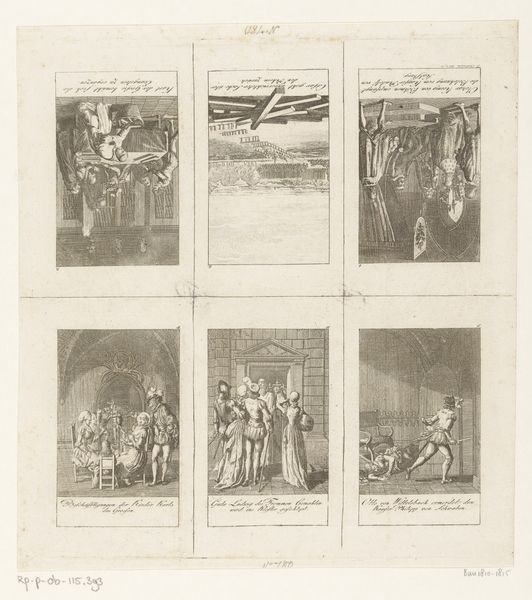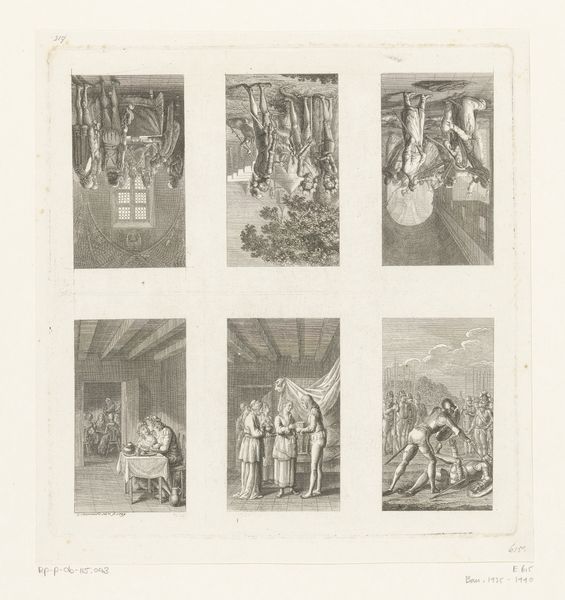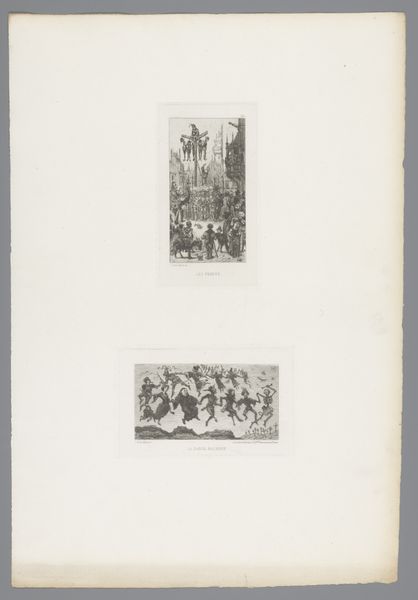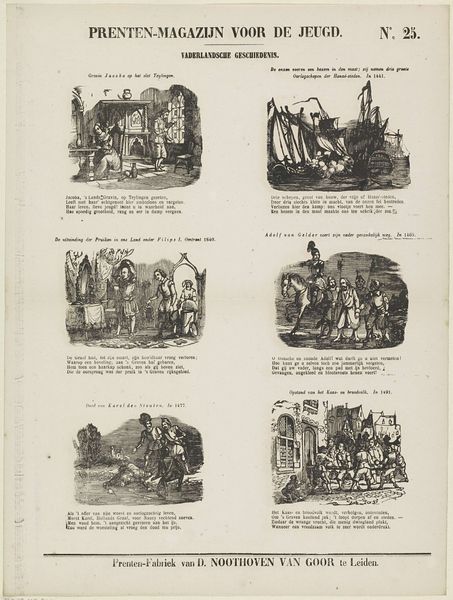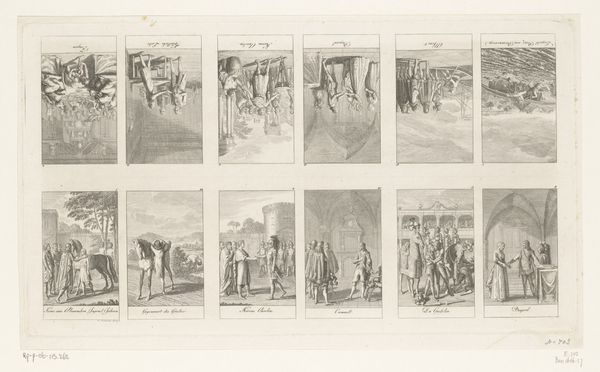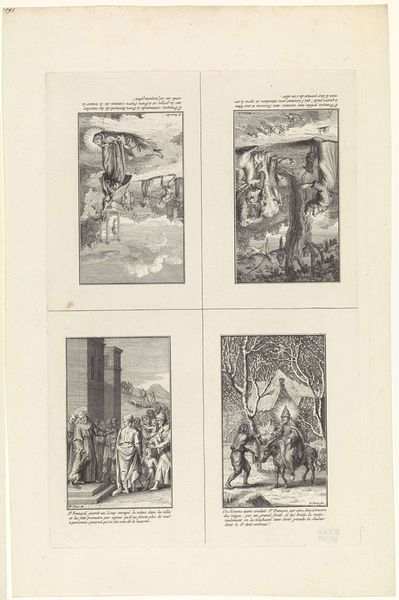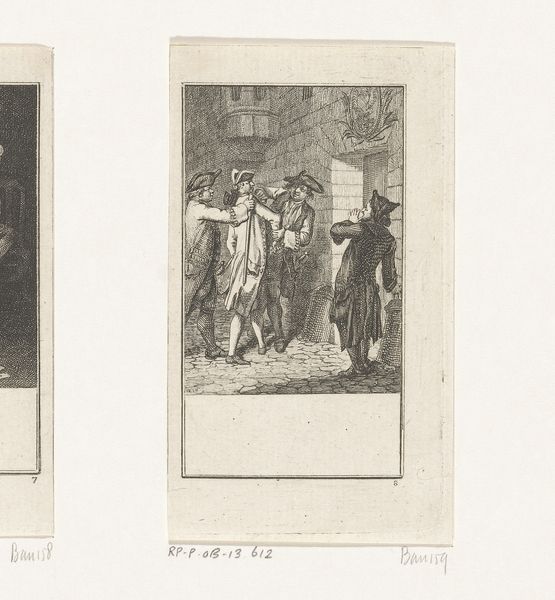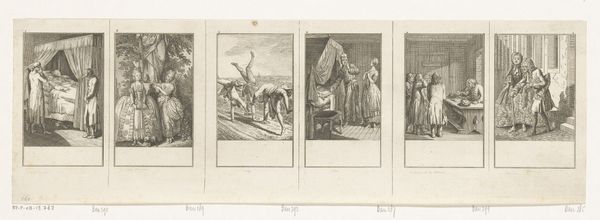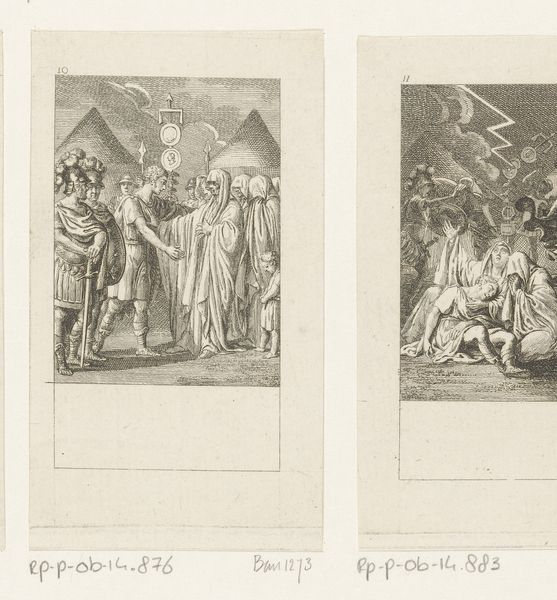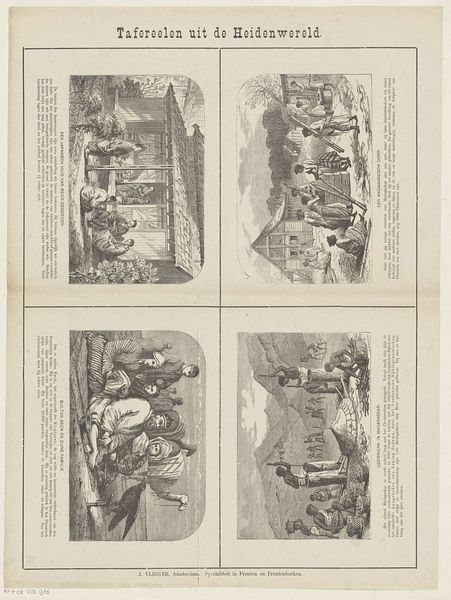
Vier voorstellingen uit de Nederlandse oorlogsgeschiedenis 1788
0:00
0:00
danielnikolauschodowiecki
Rijksmuseum
print, engraving
#
neoclacissism
#
narrative-art
# print
#
cityscape
#
history-painting
#
engraving
Dimensions: height 225 mm, width 155 mm
Copyright: Rijks Museum: Open Domain
Editor: This is “Vier voorstellingen uit de Nederlandse oorlogsgeschiedenis,” or "Four Scenes from Dutch War History," created in 1788 by Daniel Nikolaus Chodowiecki. It's an engraving printed on paper and held at the Rijksmuseum. The composition feels a little chaotic; it's like four separate stories crammed onto one page. What stands out to you about it? Curator: What immediately captures my attention is the technical process of engraving itself. Each line meticulously etched, requiring incredible labor and precision. Consider the socio-economic context: who commissioned this work, and for what purpose? These prints would have been relatively affordable and reproducible. Were they meant to be tools of propaganda, fostering a specific understanding of Dutch history for the common citizen? Editor: That’s a really interesting perspective. I hadn't really thought about it in terms of propaganda. But it's true, distributing printed images would reach more people than paintings displayed for the elite. Does the neoclassical style contribute to this potential agenda? Curator: Absolutely. Neoclassicism, with its emphasis on order and reason, often served to legitimize authority. Think about the raw materials involved – the copperplate, the ink, the paper. Each element dependent on specific labor practices and trade networks. Were these materials sourced locally or internationally? How did the act of creating these prints contribute to the larger economy? Editor: I see. So you’re suggesting that we should look beyond the scenes depicted, to the actual physical making of the artwork and how it was circulated at that time? Curator: Precisely. The materials and production methods tell a powerful story about the era, its social hierarchies, and its modes of communication. The "high art" image depends on the 'low art' production. What implications does it reveal about the accessibility of visual culture? Editor: That's a fascinating take. Thinking about it as more than just an image, but also as an object manufactured for distribution, makes me appreciate the layered meanings behind it. Thank you for this enlightening viewpoint. Curator: My pleasure. By understanding the process, we gain a much richer understanding of art.
Comments
No comments
Be the first to comment and join the conversation on the ultimate creative platform.
